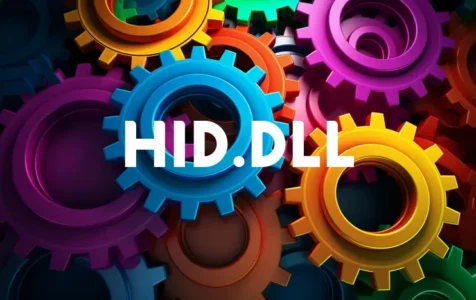HID.DLL is a type of Dynamic Link Library (DLL) file associated with the HID User Library. It plays a crucial role in the Windows operating system’s human interface devices (HIDs). This includes devices like USB joysticks, gamepads, and other input devices that facilitate user interaction with the computer. HID.DLL is integral in helping software applications communicate with connected hardware devices.
Is HID.DLL Safe to Run?
Generally, HID.DLL is a safe and essential file for Windows operating systems. However, its safety largely depends on its location on your system and where it was sourced. A legitimate HID.DLL file should be located in the C:\Windows\System32 directory. If you find this file elsewhere or if it’s downloaded from an untrustworthy source, it could potentially be a virus or malware in disguise.
Could HID.DLL Be a Virus or Malware?
While the original HID.DLL file from Microsoft is not a virus, malware creators can name their malicious files anything they choose, including HID.DLL. Always be vigilant and make sure the file is located in the appropriate system directory. If you suspect that the file might be malicious, run a scan with your antivirus software.
Common Issues Associated with HID.DLL
Errors involving HID.DLL can occur for many reasons — corrupt installations, faulty applications, or even malware. Some common issues include:
Expert Tip: For smoother PC performance, consider using a PC optimization tool. It handles junk files, incorrect settings, and harmful apps. Make sure it's right for your system, and always check the EULA and Privacy Policy.
Special offer. About Outbyte, uninstall instructions, EULA, Privacy Policy.
– Application crashes or failures due to a missing HID.DLL file.
– Slow PC performance or crashes when attempting to use certain programs.
– Error messages stating “Untrusted system file (C:\Windows\System32\hid.dll).”
How to Fix Issues with HID.DLL
If you encounter issues with HID.DLL, this may indicate problems within the system that need your attention. Here are some steps to resolve these issues:
1. Perform a full system scan for viruses and malware.
2. Use System File Checker (sfc /scannow) to repair missing or corrupted system files.
3. Perform a clean installation or reinstallation of the program that’s causing the error.
4. Update your device drivers, especially those related to input devices.
5. Utilize Windows Update to ensure your operating system has all the latest patches and updates.
For missing or not found errors, sometimes placing the HID.DLL file into the game or application’s installation folder can resolve the problem. If you need a fresh copy of HID.DLL, download it from a reliable source ensuring it matches your system’s architecture (32 or 64-bit) and version.
Community Discussions
Community discussions can provide real-life user experiences that might be useful when troubleshooting HID.DLL errors. For example, users in gaming forums often encounter HID.DLL issues which tend to occur after a crash or update, leading to an inability to launch the affected game. Another common situation is users finding that a previously functioning application like Discord, begins crashing without warning, citing HID.DLL as part of the error message.
In these cases, contributors often suggest reinstalling the affected application, running a malware scan, or copying the HID.DLL from a trusted source into the specified program folder.
For further assistance, Microsoft’s official documentation on HID concepts introduces the HID Application Programming Interface, which can help developers understand the interactions between HID devices and the operating system. This can also be helpful for advanced users looking to troubleshoot HID.DLL issues more thoroughly.
Remember, downloading DLL files should always be done with caution. Make sure to use official websites and reliable sources to minimize the risk of inadvertently installing malicious software. Always backup your system before making any changes and consider seeking professional technical support if you’re not comfortable troubleshooting yourself.
